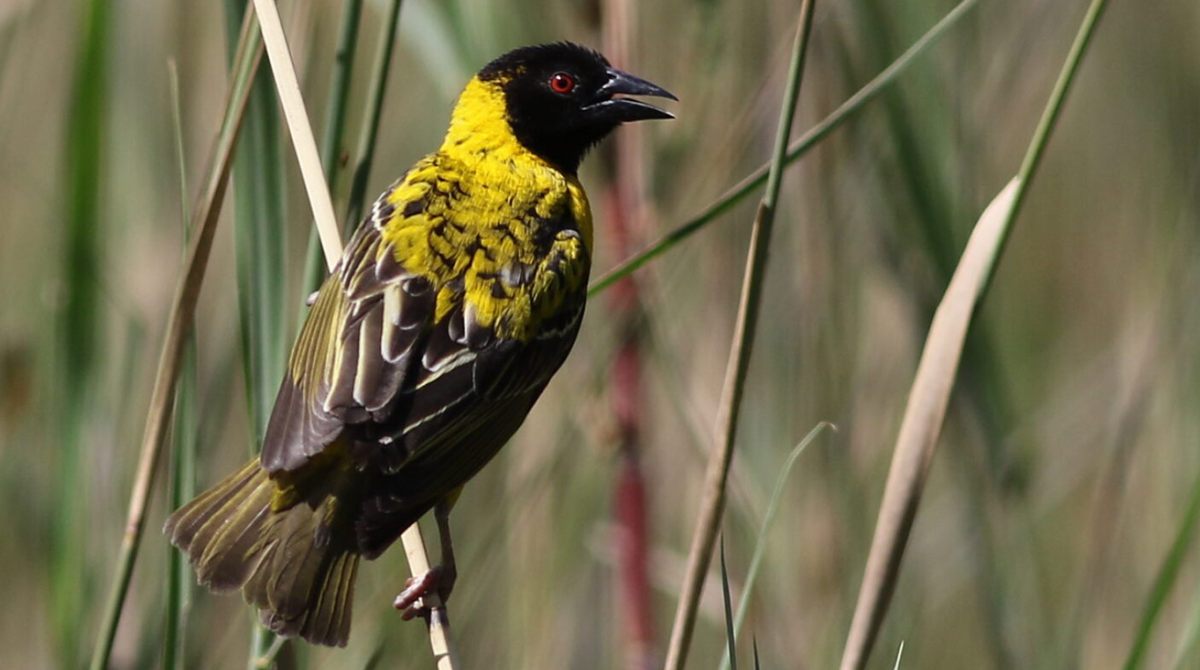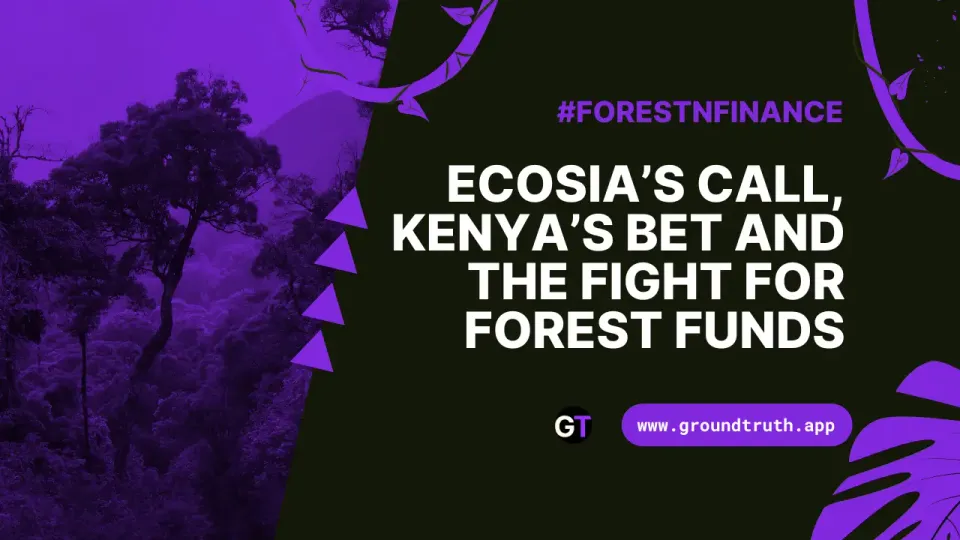Community-Led Restoration in Zimbabwe's Wetlands
The Conservation of Monavale (COSMO) Trust, a community-based voluntary initiative, is leading the restoration effort.

This story by Aimee Gabay originally appeared in Mongabay.
- In Zimbabwe’s biodiverse but fast-developing capital city of Harare, a small community has formed a wetland restoration project, known as Conservation of Monavale Vlei, to protect biodiversity and prevent degradation.
- The Monavale wetlands are under threat in part due to environmental problems caused by development, inadequate infrastructure and poor waste management.
- Over the years, the city’s water tables have been falling, as Harare extracts groundwater faster than the aquifers are replenished to meet the demands of its growing population. This issue combined with drought results in a serious water crisis.
- By replicating the Monavale Vlei model, which supports rich biodiversity, residents and experts said the city could benefit from the many ecosystem services the project provides, including water storage, groundwater recharge and water purification.
HARARE — By 6 a.m. on Sunday, the line at a water well in Harare’s Budiriro suburb is already long. It snakes all the way into a nearby street, and some people have begun fighting over who should get water first. If they’re lucky, they get clean water once a week. In other suburbs of Zimbabwe’s capital, it can take weeks or months.
Meanwhile, as the water crisis grows, the city’s wetlands, which were once able to easily store water, are being drained for new housing developments or paved surfaces as the city grows. This is also happening across the country. According to a 2022 audit of Zimbabwe’s Environmental Management Agency’s (EMA) wetlands protection, these ecosystems are being converted for commercial activities, such as construction, mining and agriculture.
“As the city is developing, it’s encroaching more and more into the wetland areas,” says Robert Neil Cunliffe, an independent environmental consultant from Harare. “Those areas are being converted from a natural grassland community to a paved surface.”
In the capital, 3,717 hectares (9,185 acres) of wetlands have so far been affected by construction, which translates to about 16% of its wetlands, according to the audit. Other factors, such as inadequate enforcement of orders and pollution, are also responsible for the decline of the country’s wetlands.
After decades of witnessing water mismanagement and the destruction of wetlands across the city, residents and local organizations have joined forces with city officials to protect and restore a small, 34-hectare (84-acre) wetland in the suburb of Monavale, also known as Monavale Vlei, a Ramsar site. The vlei, the name for a shallow lake in many parts of Southern Africa, forms part of a network of wetlands in the Manyame catchment area, which are the primary source of water for the city of Harare.
The initiative “provides a model” for what restoration and protection of all of Harare’s wetlands could look like, says Dorothy Wakeling, the Monavale Vlei program manager.
Studies have shown that wetlands can be a solution to water crises in cities, as they can provide water storage, groundwater recharge and water purification, as well as other services such as flood mitigation, carbon capture and storage, and temperature moderation. Wetlands perform many other services, Cunliffe said, “but water is probably most crucial.”
The Conservation of Monavale (COSMO) Trust, a community-based voluntary initiative, is leading the restoration effort. This was after they saw siltation, mostly caused by construction, increasing in Lake Chivero, the main source of water for Harare that’s also connected to the vlei. At the moment, the lake has lost 20-30% of its capacity as a result of silting, and residents with boreholes continue to drill deeper, more than 40 meters (130 feet), to replenish their wells as underground water supplies dwindle.
Southern Africa is in the grip of a severe drought, leaving close to 70 million people with inadequate food or water. In Mudzi, a district in northern Zimbabwe, rivers and dams have dried up, leaving residents digging into the riverbeds, desperate to extract any water they can.
For some residents of Monavale, the restoration initiative was seen as a long-needed shift from a wetland management model that focused on development to one that embraces the natural power of waterways and their surrounding ecosystems.
Pollution and a need for more houses
Monavale Vlei is part of a network of wetlands whose streams and rivers flow down into Harare’s main water supply dam, Lake Chivero. As the wetlands are located at the highest point of the watershed, their protection is vital to the health and maintenance of the catchment downstream, sources say.
But in the midst of a water crisis, these wetlands, also seen as “natural infrastructure” for their ability to act as sponges and protect against floods, aren’t receiving the protection ecologist say is needed.
“There are towns and cities facing water challenges owing to natural infrastructure not being protected, and as the degradation continues towns and cities are impacted,” Julia Pierini, CEO of BirdLife Zimbabwe, a partner of COSMO, told Mongabay by phone.
Harare has faced a water crisis for many years due to a combination of factors: pollution, increased demand, inadequate infrastructure, governance issues, drought, and climate change, sources say. The city’s sewage and water infrastructure in many places are in poor condition, leading to several cholera outbreaks over the years.
A few days before Mongabay visited Monavale Vlei, a pipe burst, pouring raw sewage into the Marimba River that bisects the wetland and is one of the major inflows into Lake Chivero, Harare’s main water source.
The sewage spill is just one of many challenges that threaten the survival of the city’s wetlands, as the city’s population increases and the need for more housing grows. Much of Monavale Vlei’s core area has already been converted from public land to private land, Cunliffe told Mongabay by phone.
COSMO and its partners have focused on protecting these open wetland ecosystems by engaging the community and groups from across society in restoration efforts. Full-time staff and community volunteers remove invasive species, identify and respond to threats, and collect environmental data on the wetlands. The area is also protected from cultivation.
According to COSMO’s records, over the last 10 years of their efforts, the site’s plant count has increased from 116 species to approximately 250 within the wetland area alone. The group has also recorded more than 266 bird species since it began formal bird counts in 2005, COSMO told Mongabay. These include migratory birds that depend on healthy, intact wetlands for breeding, such as the striped crake (Aenigmatolimnas marginalis) and streaky-breasted flufftail (Sarothrura boehmi). Other animals found in the wetland include the slender mongoose (Herpestes sanguineus), the Egyptian mongoose (Herpestes ichneumon) and the side-striped jackal (Lupulella adustus).
A water survey seen by Mongabay showed that, following restoration, Monavale Vlei’s streams were cleaner than nearby wetlands that have been used for cultivation.
Jimmy Muropa, the Monavale Vlei scout and conservation officer, said he joined the project because of his passion and wish to conserve the land and its water resources for future generations. He told Mongabay it’s important to protect these animals “because they are an indicator of the healthy nature of the wetland ecosystem.”
The project also opened up the wetlands for environmental education and research. Over the years, thousands of school and university students have used the site as an educational resource. The group has also integrated Zimbabwean cultural and spiritual traditions into its advocacy efforts, including inheritance practices known as nhaka musiiranwa. Based on this belief, the environment should be looked after so that future generations can benefit from its natural resources.
According to Cunliffe, who was a consultant for COSMO, the authorities don’t have the capacity or resources to manage the city’s wetlands. This gap is being filled by COSMO, and it’s a model that can be replicated across the country, he said.
Balancing sustainability and development
As part of its work, COSMO and its partners also focus on protecting Monavale Vlei from expanding development. The group employed Muropa to monitor unlawful encroachments and often works with the EMA and Harare City Council to ensure environmental laws are enforced.
“People see this wetland and think this is idle land,” said Barbara Vitoria, chairperson of COSMO Trust. “Harare’s wetlands are seasonal, so are often perceived as underutilized, empty space. It is difficult for developers and members of the public to understand the true value of wetlands.”
In 2019, businessman Sharadkhumah Patel obtained an environmental impact assessment (EIA) from the EMA and a development permit from the Harare City Council to develop 121 cluster homes on part of the 34-hectare protected wetland. However, this was blocked by a Supreme Court ruling in 2021 that said the EIA and development permit were issued improperly.
According to the court documents, the proposal overlapped with a section of the Monavale wetland and would have required the digging up of special foundations and clearance of lands. This would have likely caused massive degradation and irreparable destruction of bird habitat, the court said. Other ecosystem services, such as water retention and filtration, were also at risk of being affected, it added.
Amkela Sidange, the environmental education and publicity manager at the EMA, told Mongabay that the issuance of an EIA certificate doesn’t warrant destroying wetlands.
The Supreme Court ruling was due to “procedural issues,” she said. The businessman then restarted the process with recommendations and received another EIA certificate with “conditions for protecting the wetland.
Patel has now returned with another proposition of 105 cluster homes in Monavale. The Harare City Council didn’t respond to Mongabay’s requests for comment by the time this story was published.
COSMOS said it’s trying to ensure a “protected land-use status” for wetlands that prohibits harmful development, like housing construction. But it will need additional support from the government to find ways to compensate private owners and change land-use status, project organizers told Mongabay.
“This needs to include finding approaches that will balance private rights with environmental rights, land-use options, land swaps and compensation,” said Philippa Marett, chair of the COSMO management committee.
License
Gabby, Aimee. (2024). Community-led wetland restoration may hold key to Harare’s water crisis. Originally published in Mongabay. Available under a Creative Commons Attribution-ShareAlike 4.0 International License. Minor changes made to original formatting and title.




